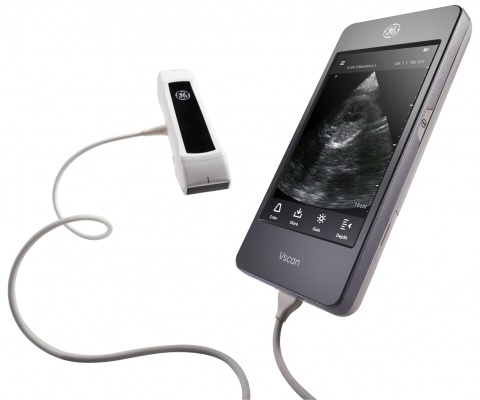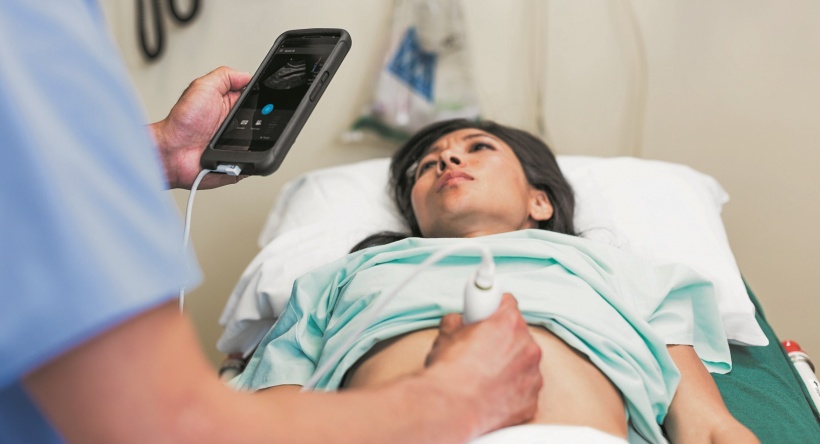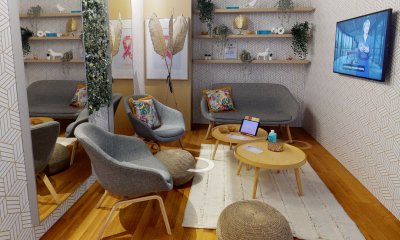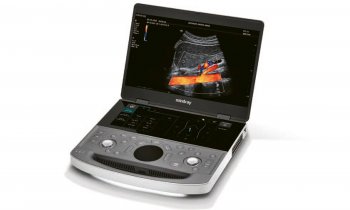Article • Handheld devices
Is 'Bring your own ultrasound' really such a good thing?
Pocket ultrasound accelerates diagnosis at the point-of-care reducing the role of the radiologist.
Report: John Brosky

You can buy a pocket ultrasound probe online, download an app to your smart phone and start making your own diagnoses of joints and organs. ‘It’s popping up everywhere. But is this a good thing?’ asked Michael Bachmann Nielsen, a radiologist at the Rigshospitalet in Copenhagen, during a session dedicated to handheld ultrasound at the European Congress of Radiology (ECR).
Helmut Prosch, a radiologist with Medical University of Vienna, added that pocket probes are ‘used by many, but understood by few. As radiologists we don’t see the usefulness of these devices, yet we are surrounded by colleagues using them.’ The chairman of the special ECR session, Michel Claudon, from the University Hospital in Nancy, France, suggested: ‘Our goal is not to stop people from buying, but to train them in how to use their device.’
Quick answers to specific questions
Point of care ultrasound (POC) exams can quickly answer a specific clinical question, to send patients along care pathways rapidly. Examples of already established exams include focused assessment with sonography in trauma (FAST), bedside lung ultrasound in emergency (BLUE), and the focused echocardiography in emergency life support (FEEL). The handheld portable ultrasound device segment is expected to be the fastest-growing niche in the overall ultrasound market, increasing at a 13.1% compound annual growth rate through 2022. Enabling the trend toward pocket ultrasound is the wide acceptance in healthcare for bring-your-own-device (BYOD).

Changes in device design
According to a study by IT network provider Cisco Systems Inc, based in San Jose, California, by 2013 some 88% of healthcare workers used their smart phones or tablets at work, with the tacit agreement of their institution. This has led to a key shift among device design to throw out dedicated ultrasound viewers and enable scans to be viewed on personal BYO devices, which most often have a higher resolution of the image. Bachmann Nielsen provided an overview of the leading devices used in the western world, noting he did not include the surge in such devices coming out of Asia.
Device overview
The Vscan from GE Healthcare is one of the original devices in the segment, and the company holds the leading market share. The 14-ounce Vscan Extend is the latest version, introduced in 2016 with a five-inch touch screen for the dedicated viewer a permanently attached probe. The Vscan Extend offers, in a single handle, dual transducers, a phased or linear array enabling either shallow views of tissue or a deeper look into organs.
In 2014, Philips Healthcare introduced the Lumify smart-device ultrasound that is compatible with any handheld computer or phone running the Android operating system. The commercial USA launch came in 2015.
The BYOD approach offered by Philips includes a subscription model for $199 per month for qualified healthcare professionals to scale their ultrasound solution to meet their needs without having to purchase imaging equipment. Pre-set exams in the app and three different probes enable use in acute and emergency care, internal medicine, or musculoskeletal exams for orthopaedics, sports medicine and podiatry, as well as routine medical office practice.
Clarius Mobile Health is riding the BYOD wave offering the first mobile ultrasound scanner with an application for both iOS and Android devices. At ECR the company was launching its commercialisation in the European Union of the handheld, wireless Clarius C3 and the Clarius L7 multipurpose ultrasound transducers that talk to the everyday technology onboard personal, off-the-shelf smart devices. ‘We take advantage of the latest screen technology available on mobile devices, which has an appeal for radiologists with the high quality resolution and display,’ said Neena Rahemtulla, the vice president for marketing.
Fujifilm SonoSite offers the iViz, a seven-inch tablet with two cabled transducers that stands out for its one-hand navigation of the touch screen and a superior 1900 by 1200 pixel image user interface, though it is hefty at 20 ounces.
Mobisante offers the Mobus SP1 System viewer that weighs less than 12 ounces as a dedicated system of transducer, cable and viewer, but also introduced the Mobius PE, that can run on any Windows-based device.
26.10.2017











